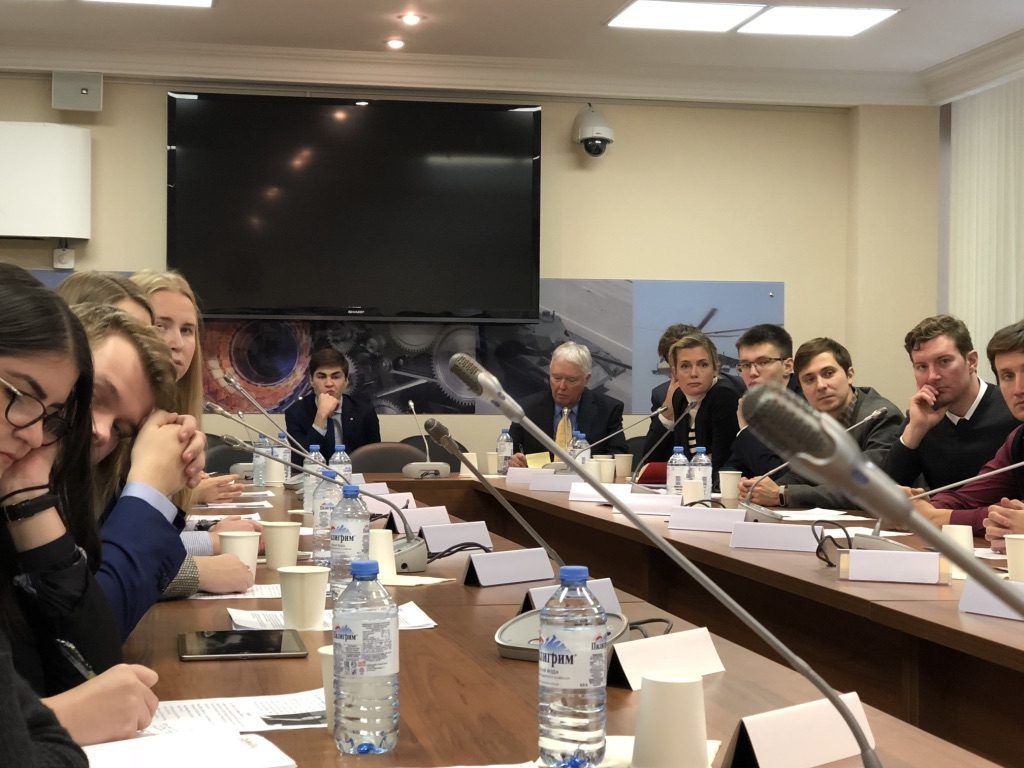What countries will be the most important in leading a significant expansion of global nuclear power—both from the perspective of the supplier and the user?
By Vladislav Kostikov, Anna Kudriavtseva, Cameron Tracy | June 20, 2019

Any global expansion of nuclear energy will be governed by the economics of energy—including demand and pricing—but also by larger geopolitical forces such as domestic politics or the relations between countries that are users of nuclear power and nuclear technology supplier countries. Because the reduction of carbon dioxide emissions is a major impetus for nuclear expansion, population size and density will also play a major part. This means that the geographic distribution of nuclear energy generation could change dramatically.
Today, nuclear energy is concentrated in a handful of countries. Only five (the United States, France, China, Russia, and South Korea) generated more than 100 terawatt hours each in 2017 (to give a sense of scale, Hoover Dam generates an average of 4.2 terawatt hours each year). But this distribution will shift as energy demand grows in developing countries and as several of the most prominent nuclear users—such as the United States, France, and Japan—retreat from nuclear energy in light of competition from cheap natural gas (and potentially from renewable energy sources), aging nuclear infrastructure, and continuing public concerns about nuclear power plant safety and nuclear waste.
Therefore, it is likely that rapidly developing countries with the largest and fastest-growing energy demands—such as China and India—will dominate any potential global expansion of nuclear energy, alongside countries like Russia that are active in both domestic and international reactor construction. Likely secondary players, mainly in the role of suppliers, will include the United States, France, South Korea, and possibly Kazakhstan. Yet, for a global expansion of nuclear energy to occur, cooperation will be required between established players in the nuclear field and relative newcomers.
This cooperation and development will need to occur in three main areas: nuclear energy generation must expand in both new and existing markets; the international supply of reactors and related technologies must grow; and the international supply of fuel and fuel cycle services must be increased. These developments must also account for considerations of safety, waste management, and nonproliferation.
Let us address each of these main areas in turn.
Expansion of domestic nuclear energy capacity. Even as many major users retreat from nuclear energy, others are ardently pursuing expansion of their reactor fleets. Russia, China, and India are currently building a combined total of 24 reactors, out of the 54 in construction worldwide. The latter two countries encompass 2.8 billion people (roughly 40 percent of the world’s population) and are experiencing rapid growth in energy demand alongside swift economic development. As a result, the effects of nuclear expansion in China and India will dwarf those of expansion elsewhere. That said, many smaller and emerging markets in Southeast Asia, the Middle East, Eastern Europe, and South America currently plan to develop or expand their nuclear capacity. Leaders among these countries include South Korea and the United Arab Emirates, with five and four reactors under construction, respectively, although South Korea has indicated it may seek to reduce its domestic reliance on nuclear energy.
International supply of nuclear reactors and related technologies. Several of the nations most rapidly increasing their nuclear generation capacity lack the industrial base, skilled workforce, and technical capabilities necessary to independently build and operate the reactors they wish to acquire. Consequently, the international supply of reactor design and construction services will be a critical factor in a global expansion of nuclear energy, as will the supply line of complex components like reactor pressure vessels and the expertise required to construct and operate reactors. The supply side of nuclear development is dominated by a handful of countries, primarily France, Russia, China, and South Korea, with the United States and Japan contributing to a lesser extent. For example, Russia has been contracted to build several of India’s new reactors and provide technical support to India’s indigenous reactor design process. Similar deals have been struck between Russia and nations in the Middle East, Eastern Europe, and even China—another emerging supplier nation.
While most current reactor construction involves conventional designs, a global nuclear expansion could prompt the deployment of more advanced reactors and may require energy solutions tailored to the needs of individual countries. Demand for such novel reactor designs would alter the supplier balance. For example, fast reactors, which use higher energy neutron fluxes, offer advantages in terms of fuel efficiency and waste production (yet could also contribute to nuclear weapons proliferation). Currently Russia, China, and India operate experimental and demonstration fast reactors, and could dominate international supply if demand for these designs swells. Similarly, demand for small modular reactors could boost the influence of the United States, Russia, and Japan, which lead development in this area. These designs are relatively simple, cheap, and sometimes mobile, making them particularly attractive for emerging markets.
Supply of fuel and fuel cycle services. Uranium resources, enrichment capacity, and waste management capabilities are widely distributed. The production of uranium ore—from which nuclear fuel is made—is dominated by Kazakhstan, Canada, Australia, Niger, and Namibia, countries that are otherwise minor players in nuclear energy production. Burgeoning demand for uranium due to expanded use of nuclear energy would require that these suppliers increase production. Advances in uranium extraction from seawater, an approach spearheaded by Japan, could also contribute to meeting this demand.
Common reactor designs, such as light water reactors, require isotopic enrichment of mined uranium prior to its conversion to fuel. Only a few countries possess substantial enrichment capacity, namely Russia, France, the United Kingdom, the Netherlands, and Germany (the latter three operate jointly under the commercial Urenco Group, which also has operations in the United States). China possesses a relatively modest enrichment capacity, but it is likely to greatly expand its capabilities in the near future. As with the uranium ore supply, an increase in global enrichment capacity would be critical to any expansion of nuclear energy. Given the dual-use nature of enrichment technology, which can be used to produce weapons-usable materials, security concerns could hinder increased enrichment activities. Security issues may be partially mitigated by the establishment or expansion of nondiscriminatory international fuel supply mechanisms, such as the fuel bank currently operating in Kazakhstan.
The back-end of the nuclear fuel cycle also presents challenges to the expansion of nuclear energy. Because spent fuel from commercial reactors contains plutonium (although not as attractive for weapons use as that from plutonium production reactors), fuel take-back agreements with nuclear-armed countries will likely be required alongside the international supply of reactors and fuel. Final disposal of spent fuel will also require the involvement of countries that possess experience and capabilities in this area. Finland and Sweden, which will soon operate the world’s only geologic repositories for spent fuel, could provide key operational expertise to other nations. A recent proposal by the Australian government to establish a repository accepting waste from international sources, although ultimately abandoned, demonstrates a potential for countries without nuclear energy capabilities to participate in an expansion of nuclear energy.
A changing nuclear landscape
The distribution of nuclear capabilities among countries is likely to change in a global expansion of nuclear energy. Russia and China would be key players, as both users and suppliers, while India would be a key player as a user. Likely secondary players include smaller users in Southeast Asia, the Middle East, Eastern Europe, and South America, as well as potential suppliers such as the United States, France, South Korea, and Japan. The most important shift necessary to facilitate expansion is an increase in international cooperation and multilateralization in the form of, for example, international reactor supply contracts, multinational enrichment conglomerates, nondiscriminatory fuel banks, and international waste repositories.
Together, we make the world safer.
The Bulletin elevates expert voices above the noise. But as an independent nonprofit organization, our operations depend on the support of readers like you. Help us continue to deliver quality journalism that holds leaders accountable. Your support of our work at any level is important. In return, we promise our coverage will be understandable, influential, vigilant, solution-oriented, and fair-minded. Together we can make a difference.
Topics: Analysis, Climate Change, Nuclear Energy, Voices of Tomorrow
















